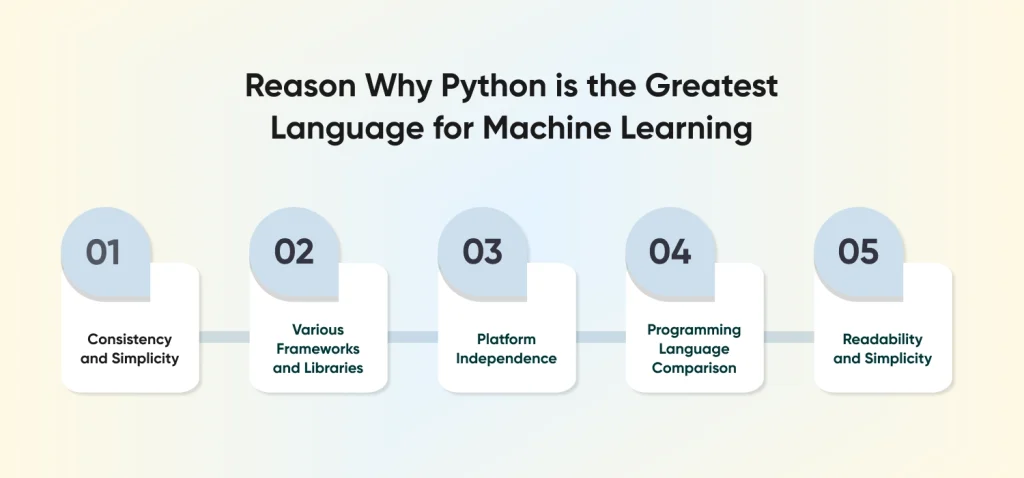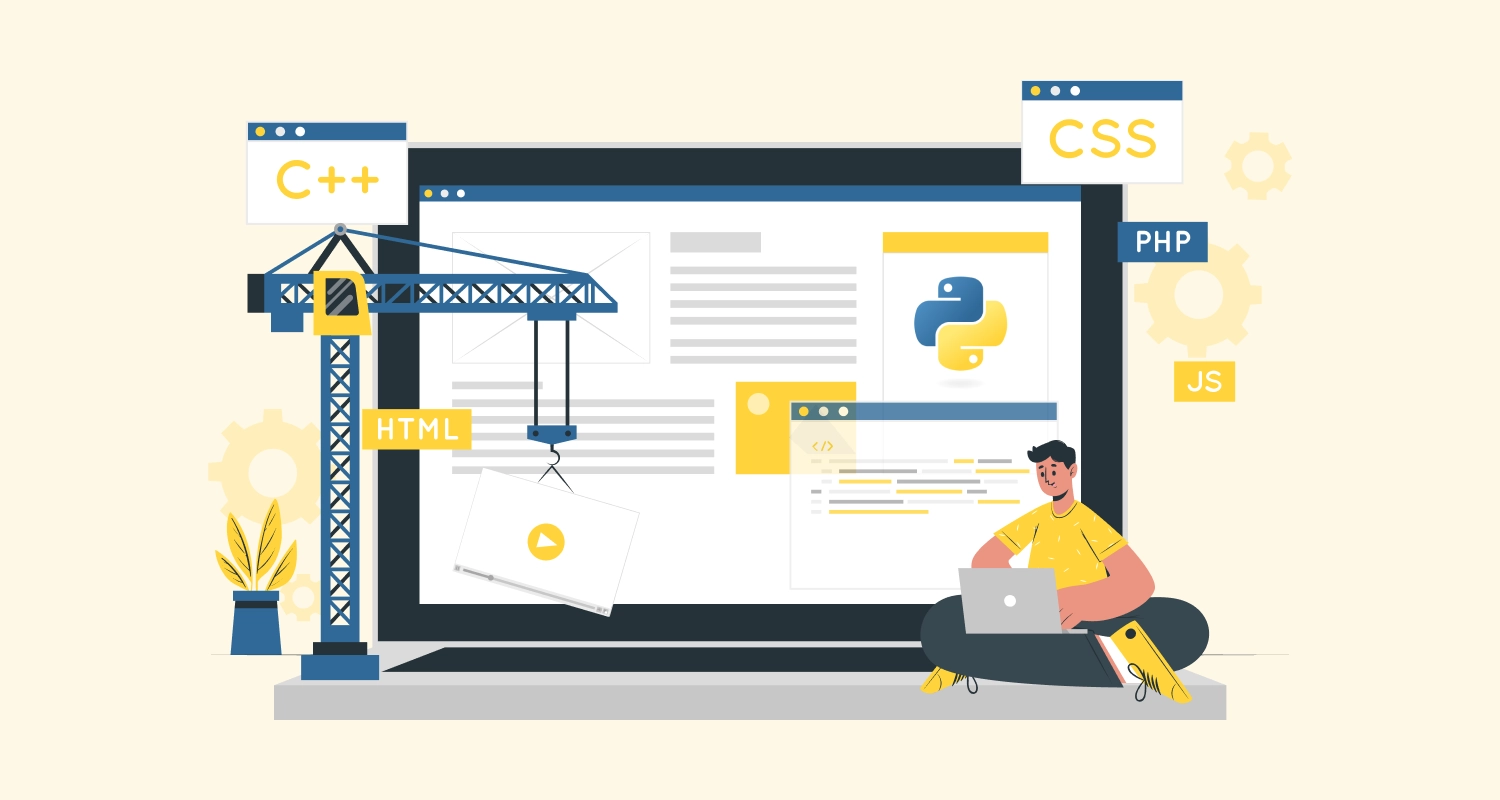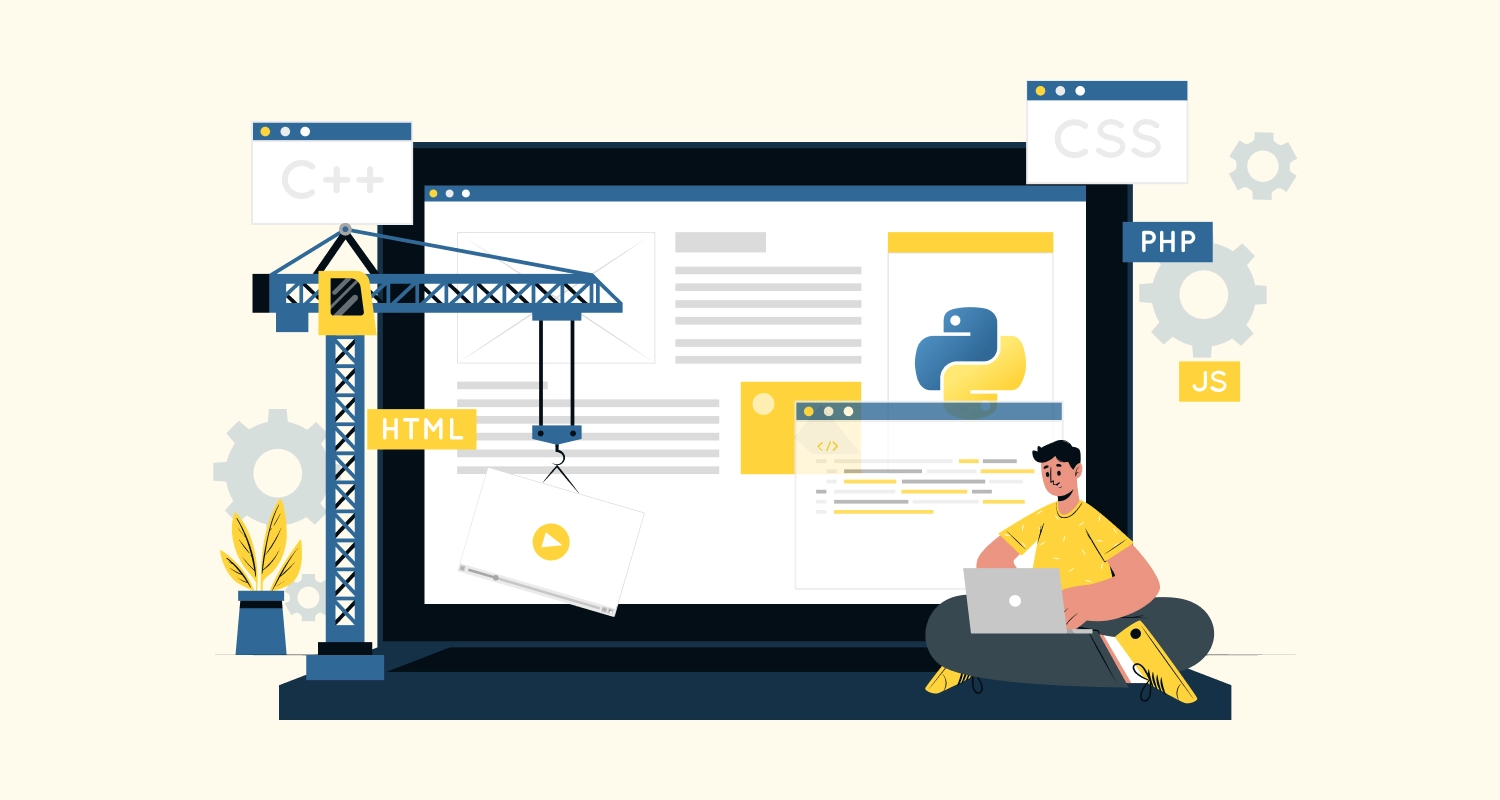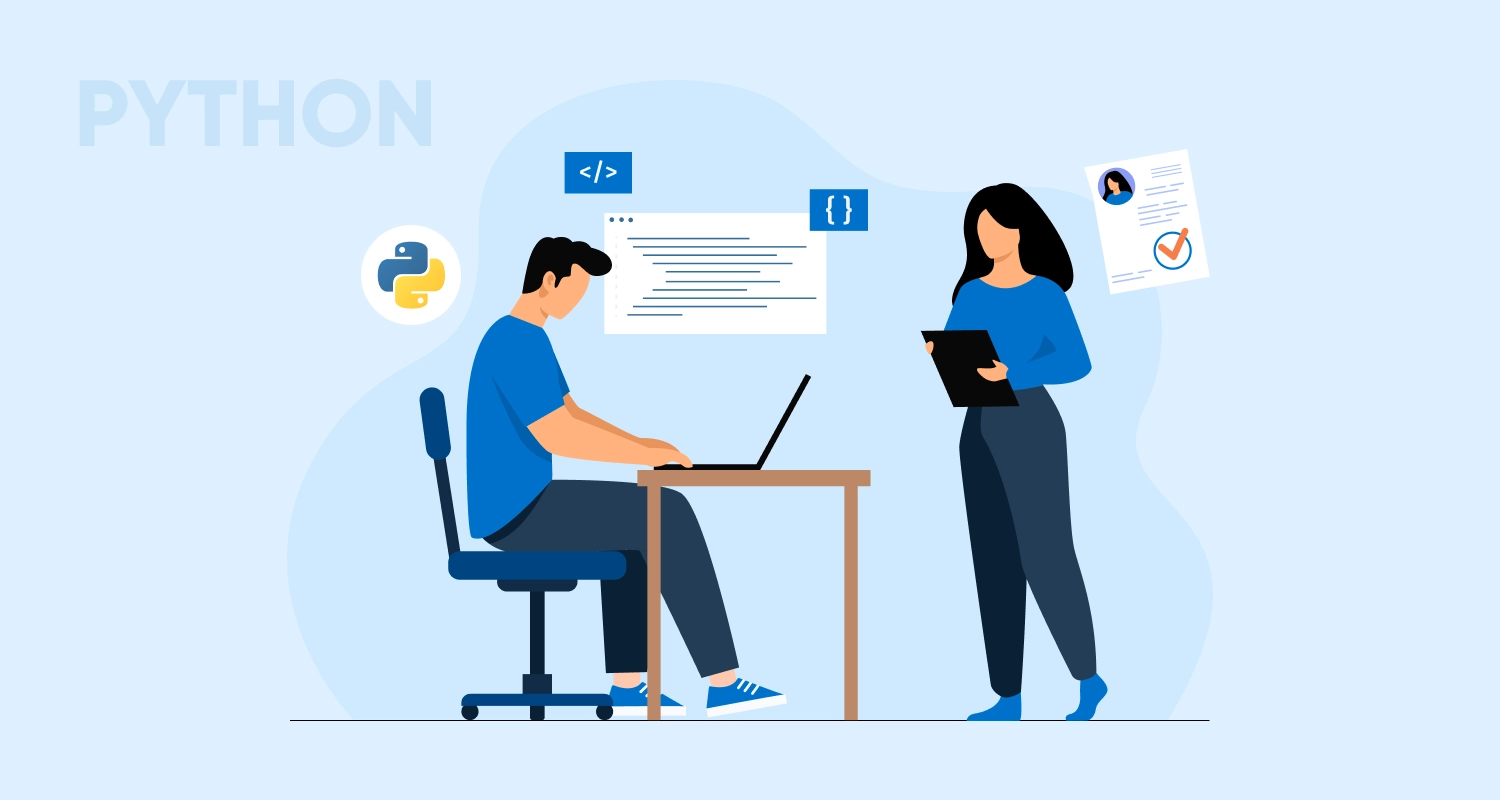The de-facto programming language for deep learning and machine learning applications is now Python. However, what is machine learning exactly, and why is Python so important?
One of the most widely used programming languages in the fields of machine learning and artificial intelligence is Python. Python is used by 90% of machine learning engineers, according to Kaggle survey findings. To create more useful solutions, leading IT companies hire Python developers to work on artificial intelligence and machine learning.
Organizations utilize it as well to enhance workflow and increase productivity. Easy syntax, a large library, straightforward code, platform independence, and many other factors make Python the best option for developing AI software.
We will go into great detail in this blog post about the benefits of using Python development services for machine learning. But first, it’s critical to comprehend how much demand there is for AI and machine learning. Now let’s get going.
Why Machine Learning in Python?
Python is a computer language that is capable of handling several tasks at once. However, when used with Python for Machine Learning, it yields some remarkably productive outcomes. How are things going? Let’s find out by comprehending a few potent Python features.
The Ecosystem of Libraries
Python offers many libraries for machine learning, including Scikit-learn, Pandas, and NumPy. These libraries facilitate data manipulation, analysis, and model building. Additionally, having these libraries nearby promotes agile development and easier-to-manage chores.
Prior Model Training and Transfer Learning
Python has packages such as PyTorch and TensorFlow, which provide access to state-of-the-art architectures and pre-trained models. With these pre-trained models, developers may quickly design complex models and transfer learning while using minimal training and computational resources.
Practical knowledge
Industry-wide, Python is the go-to programming language for creating machine-learning models. It is the preferred programming language among developers for creating and deploying machine learning models because of its adaptability and simplicity of integration.
Simple Integration of Languages and Tools
Python simplifies the process of integrating with other tools and languages. Data migration, deployment, and visualization all benefit from integration. Python is more adaptable than other languages when it comes to integrating with deep learning frameworks like PyTorch and TensorFlow.
High Performance
In terms of optimal efficiency, the NumPy library for Python, and productive Python machine learning code. Python makes use of C and C++ for applications requiring a lot of performance. Python even strengthens parallel processing, making multi-core machines possible.
Agile Prototyping
Python must be coupled with Jupyter Notebooks and other development environments to facilitate rapid prototyping. Software developers will be able to test, iterate, forecast outcomes, and extract insightful information from the data by doing this.
Because of its extensive library, Python is currently one of the most widely used programming languages for this kind of work, replacing several other languages used in the business. The following Python libraries are utilized in machine learning.
Different Python Libraries
Numpy
Using a vast number of sophisticated mathematical operations, NumPy is a well-liked Python library for handling massive multi-dimensional arrays and matrices. For basic scientific computations in machine learning, it is highly helpful. It is especially helpful for functions related to random numbers, Fourier transform, and linear algebra. NumPy is internally used by high-end libraries such as TensorFlow to manipulate Tensors.
SciPy
SciPy is a highly well-liked library among fans of machine learning since it includes many modules for statistics, linear algebra, integration, and optimization. The SciPy stack and the SciPy library are not the same thing. One of the fundamental packages that comprise the SciPy stack is SciPy. SciPy is a great tool for manipulating images as well.
Scikit-learn
One of the most widely used ML libraries for traditional ML algorithms is Scikit-learn. NumPy and SciPy, two fundamental Python libraries, serve as its foundation. The majority of supervised and unsupervised learning algorithms are supported by Scikit-learn. Scikit-learn is a fantastic tool for anyone just getting started with machine learning development services because it can also be used for data mining and analysis.
Theano
Machine learning is essentially mathematics and statistics, as we all know. A well-liked Python package called Theano is used to efficiently define, assess, and optimize mathematical equations involving multi-dimensional arrays. By maximizing CPU and GPU utilization, it is accomplished. It is widely used to identify and diagnose various error kinds during self-verification and unit testing. Theano is an extremely potent library.
TensorFlow
The Google Brain team created the well-known open-source library TensorFlow for high-performance numerical computing. TensorFlow is a framework for constructing and executing tensor-based calculations, as the name would imply. Deep neural networks, which may be utilized to create various AI applications, can be trained and operated by it. The field of deep learning research and application makes extensive use of TensorFlow.
Matplotlib
A data visualization package called Matplotlibs allows for cross-format static, animated, and interactive visualization. Matplotlib is used by software developers for scientific research, machine learning, data analysis, and visualization.

How to Apply Machine Learning using Python?
One of the easiest programming languages to understand and use is Python. Python’s ability to leverage machine learning will provide some beneficial outcomes. Python boasts a simple syntax that is accessible to both novice and expert software developers.
Let’s now examine how Python will improve the experience with machine learning.
Simple Development Process
Python’s simple syntax makes the development cycle easier to navigate. No-nonsense hassles are guaranteed by its special qualities, which include code maintainability, readability, and cooperation. Additionally, a sizable community is constantly alert to assist in the rapid prototyping, experimentation, and iteration of machine learning models.
Tableau Integration
Tableau Python Server (TabPy) and Tableau Data Extract API make it simple to integrate Python with Tableau. To begin with, TabPy makes it possible to use Python code inside of Tableau. Through the use of custom functions and machine learning capabilities, this solution makes Tableau visualization possible.
Versatility & Integration
Python’s versatility makes it possible to integrate data processing and visualization technologies with ease. Web frameworks, databases, and APIs are interfaced with the aid of integration, which facilitates preprocessing and data collection. You can use Python’s libraries, such as Matplotlib and Plotly, to analyze data patterns and model outputs.
Improvement of Performance and Scalability
Python uses parallel computing, GPU acceleration, and multi-core processing to increase performance. Large-scale machine learning models may be trained and concluded thanks to the high-performance computation provided by libraries like PyTorch and TensorFlow.
Integration of Deep Learning
Python is the best language for deep learning. Additionally, tools for creating and refining deep neural networks are provided by libraries like PyTorch and TensorFlow. The best way to apply deep learning techniques across verticals is to use pre-trained models.
Variety of Libraries
Firstly, NumPy, SciPy, Scikit-learn, TensorFlow, Keras, and PyTorch are just a few of the numerous libraries available for Python that provide a wealth of features for machine learning jobs. Pre-built tools and techniques for data processing, model development, training, deployment, and evaluation are supported by these libraries. Furthermore, these libraries claim to greatly simplify and improve difficult machine-learning procedures. Developers may concentrate on the fundamental logic of the models because of ML libraries.
Detailed Records and Community Support
Python offers a wealth of tutorials, python machine learning examples, and documentation to help you get started with creating machine-learning models. Problems can be addressed and conquered with creative solutions when there are ongoing advancements, conversations, lively online forums, and readily available internet resources.
Reason Why Python is the Greatest Language for Machine Learning

Now that you know more about machine learning and artificial intelligence, let’s return to the original question of why Python is employed in machine learning. Additionally, Python is a great choice for machine learning for at least four reasons. Let’s list them:
1. Consistency and Simplicity
Python helps simplify sophisticated prediction technologies like machine learning models and AI algorithms. How? Its clean code and abundance of libraries tailored to machine learning allow one to move the emphasis from language to algorithms. It is also intuitive, consistent, and very simple to learn.
2. Various Frameworks and Libraries
Python leverages a large collection of libraries and frameworks for machine learning. As an illustration,
- NumPy functions with arrays, various matrices, and in certain areas of linear algebra.
- Experimentation may be done quickly with Keras, a TensorFlow-based deep learning API.
- TensorFlow is a deep neural network and training-focused open-source library for machine learning and artificial intelligence.
- With the help of the Matplotlib toolkit, Python users may create static, animated, and interactive visualizations.
- Seaborn is a Python-based data visualization framework that makes it possible to create eye-catching, high-quality statistical visualizations.
Applications for computer vision and natural language processing can be developed using PyTorch, an open-source machine learning package.
3. Platform Independence
Python can be used to design software that can be built and executed on a variety of operating systems. For example, Windows, Linux, Mac, Solaris, and so forth. This greatly improves the convenience of Machine Learning using Python programming. Python is thus favored by developers when creating machine-learning applications.
4. Programming Language Comparison
Python is different from other programming languages like Java in that it is easy to learn, flexible, and has a large number of machine learning-specific libraries. Its object-oriented design and simple syntax make it a great option for both novice and seasoned developers. Python’s simple syntax makes it easier for developers to produce intelligible code and easily find and repair errors, allowing for faster development and debugging than other languages.
In addition, Python is platform-independent, which enables it to function on a variety of platforms, including Linux, Mac, and Windows. Without having to rewrite source code, developers may construct ML apps that work across platforms thanks to its cross-platform interoperability.
5. Readability and Simplicity
- Python: The syntax in Python is very understandable, succinct, and clear. This facilitates code writing and comprehension for both novice and seasoned engineers, encouraging quicker development and teamwork.
- R: R has a higher learning curve for non-statisticians and is primarily intended for statistical analysis. Compared to Python, its syntax may be less understandable for general-purpose programming applications.
- Java/C++: Due to their more complicated syntax and need for boilerplate code, Java and C++ are less suited for machine learning experimentation and rapid prototyping.
Python’s Practical Uses in Machine Learning
Python has emerged as the main engine powering a plethora of practical machine-learning applications, transforming our relationship with technology and the digital realm. Let’s look at a few effective instances when Python has been essential:
YouTube
Using machine learning, one of the biggest video-sharing websites in the world provides viewers with personalized content recommendations. Python-driven algorithms choose the most relevant videos by examining user behavior and preferences, which keeps viewers interested and happy.
The tech behemoth leverages AI and machine learning in a plethora of its products and services, from customized Google Assistant responses to search engine ranking algorithms. Python is the preferred language for implementing these sophisticated machine-learning algorithms because of its adaptability and efficiency.
Spotify
To provide its users with personalized music suggestions, the well-known music streaming service uses Python. Python algorithms make sure consumers find new music they appreciate by examining listening patterns, user-generated playlists, and other data sources.
The popular social news aggregation and discussion website had a metamorphosis in 2005 when it switched from Common Lisp to Python for its codebase. The change facilitated Reddit’s expansion and success by enabling it to leverage Python’s extensive code library collection.
With hundreds of millions of users globally, Instagram uses machine learning algorithms based on Python to choose which material to display on users’ feeds. Python makes the user experience and engagement on the platform better through content ranking and personalized suggestions.
ChatGPT
Creating a Machine Learning model in Python created by OpenAI, ChatGPT, has gained international attention. The natural language processing powers of ChatGPT, which was developed in Python, have opened up new possibilities for chatbots, virtual assistants, and interactive language-based applications.
There are plenty of Python app examples that demonstrate how Python has revolutionized the machine-learning profession. Because of its adaptability, simplicity of use, and robust community support, Python has become an essential tool for implementing intricate algorithms and influencing how we use technology daily.
Conclusion
The preferred programming language for developers has been and always will be Python. Its compatibility with all cognitive technologies and ability to do the majority of futuristic activities is another reason for its selection. Python and machine learning are widely used in a wide range of industries, including manufacturing, healthcare, finance, and internet platforms.
Get in touch with us if you wish to use Python and machine learning. A team of knowledgeable and skilled developers who will carry out your idea to improve and simplify the lives of your clients.
Frequently Asked Questions
Which Are the Best Machine Learning Algorithms Implemented in Python?
Building up the SciPy and Python platforms.
Bringing up the dataset.
Putting the dataset into a summary.
Putting the dataset into visual form.
Assessing a few algorithms.
Speculating a bit.
How to Evaluate the Machine Learning Performance Model in Python?
Use train_test_split to divide your data into training and testing sets. Then, use the training data to train the model, the test set to generate predictions, and metrics from the sklearn. Metrics module to evaluate performance, such as accuracy, precision, recall, or F1-score.
Why Is Python Used for Machine Learning?
Python’s readability, large library and framework support, robust community, interoperability, and scalability make it the most popular programming language for machine learning. Memory utilization and algorithm complexity can be optimized to solve issues like performance issues.
How to Start Machine Learning in Python?
Building up the SciPy and Python platforms.
Bringing up the dataset.
Putting the dataset into a summary.
Putting the dataset into visual form.
Assessing a few algorithms.
Speculating a bit.







